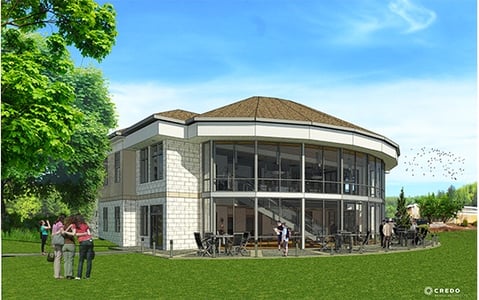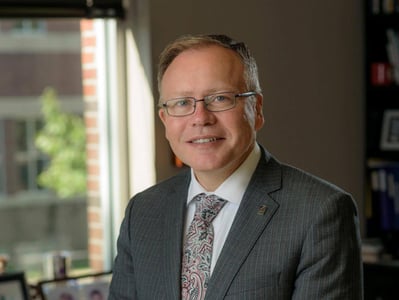
July 10 2019
Universities should serve as places where diverse thought can be explored, analyzed, and understood in terms of its origin and impact. Within this exploration rests a profound commitment to open, often difficult dialogue about deep-seated issues that have plagued American society for decades, if not centuries. Too often, given the inherent prejudices we fight individually and collectively every day, that dialogue is not explicated in a truly educative way that fosters understanding from a place of appreciation and awareness. A principle of context before content offers a strong position from which to launch bias and inclusivity programming. Conversations must begin with an understanding of context based on individual diverse journeys, the challenges they have faced, the history of their culture and its dynamics, and how identity shapes experience. After that is established consistently and intentionally, then issues, experiences, and perspectives can be shared, and over time, culture can shift.
When it comes to engaging our students in bias and inclusivity conversations, the concept of “safe spaces” has pushed higher-education leaders to carefully examine the balance of our commitment to our students and to free speech. Multiple definitions of safe spaces are currently in use, confusing both those in our sector and across the media. We must clearly define the term among faculty and staff and across our campus community and take an unequivocal stand on the role of higher education as it relates to encouraging open debate. Four definitions are most common:
- The creation of a safe space can be defined as the ability of a group of individuals with a similar identity, background, or set of experiences to gather together in order to explore that identity, background, or experience with openness, and without fear of attack or ridicule. A multicultural group, an LGBTQI club, and a sexual-assault-victims’ organization are examples of a healthy articulation of safe spaces. All students deserve to feel fundamentally safe on our campuses. These communities, most frequently formed around particularly vulnerable or underrepresented populations, can offer a level of emotional protection that can be critical to their well-being and ability to engage successfully in their learning.
2. The phrase safe space is also used to describe an academic environment in which all individuals are encouraged to “speak, take intellectual risks, and explore any line of thought.” In this context, safety is focused on the ability and right of the speaker to engage in free speech and critical thinking around the topic at hand. In this scenario on most of our campuses, those in the conversation will represent different perspectives and experiences, and should all be allowed to bring rational, fact-based argument to the table without fear that he or she will, for example, be graded poorly because of an opinion that differs from that of the professor. Academic protection is deeply aligned with an individual’s first-amendment rights and ensures an academy that welcomes and encourages freedom of thought as critical to intellectual development.
3. Safe space can also be defined as people’s reasonable expectation to not have to defend or debate their beliefs in the confines of their private living space. Ashutosh Bhagwat and John Inazu wrote, “We suspect that even the most vigorous academic proponents of open debate would not want their living rooms to become open forums for diverse-viewpoint expression. Most people need to be able to retreat and rejuvenate in their homes and other intimate social settings. In these environments, people commune with like-minded friends, engage in informal interactions, and pursue mindless pastimes with no ideological content at all … In these settings, people often do not want to have to defend their deepest beliefs, or to confront hostility. These behaviors are perfectly normal for most of us, and that includes college students.” Residential campuses present a uniquely challenging environment within which we must recognize that unlike faculty, staff, and administrators, residential students do not always have the option to retreat from campus for privacy.
4. While all three of the above safe spaces have a place in higher education, it is the fourth and newest interpretation of “safe space” that challenges the core of our work as educators. The Harvard Political Review article “Tackling the Term: What is a Safe Space?” examines a conflation causing consternation and inflaming passionate debate across the academy. A new iteration of the concept has emerged—some students advocate to expand emotional safe spaces to encompass the campus as a whole. This new space is a false extrapolation of the originals, mistakenly operating under the unshakable credo that in an academic setting, people should feel emotionally secure.
A problem arises in this case. There exists a tension between emotional safety and academic safety. If the goal of an academic setting is to keep people comfortable, then the acceptability of speech will be determined by how objectionable it is. And if arguments are limited based on how offensive they seem, people are expected to adhere to an implicit set of polite ideological norms. Speech is allowed so long as it doesn’t appear to conflict with the socially accepted opinions on certain touchy topics. In this way, new safe spaces become less about respecting and empowering individuals than sanctifying certain ideas. Provocative speech is censored, which has pernicious effects on the academic tradition.
This fourth conception of safe spaces must not be embraced by the new university. It is antithetical to intellectual exploration and does not prepare students for a world where the marketplace of ideas and perspectives is rich, varied, and often necessarily challenging.
Find out more about Credo's leadership development services on our Leadership Development page.
We live in an era of heightened rhetoric with little room for thoughtful and respectful debate. As our country experiences a continued ideological polarization (i.e., choose your group and hunker down on your side), we also have tended to move away from inclusive dialogue. If society increasingly refuses to engage in civil discourse and debate, then universities must be models for how dialogue and discussion among people with widely disparate views and experiences are carried forth with respect and dignity. It is hard and powerful work that demands a high level of self-awareness and respect for those who disagree, and it means exposure to concerns and ideas that many will find difficult. But being uncomfortable is not a reason to inhibit free speech or the civil debate of issues. It is the educated and mature person who can explore, analyze, and debate viewpoints with reasoned respect and factual context.
Ultimately, everyone is entitled to their own opinions, but not their own facts. That is where the debate can begin, with ensuing discussions focused on developing understanding and awareness. Modeling that kind of discourse may indeed be the most important lesson the university and its community members can provide to our students.
Opportunity and Inclusion: Diversifying the Campus Culture Challenge Questions
- Do you moderate access to your institution using standardized test scores?
- Do you have processes in place that support a recruitment and retention culture?
- Is the university as a whole moving toward a more representatively diverse campus community that is reflective of national demographic trends?
- Does your institution have cultural barriers to diversity and inclusion?
- Does the president own and lead diversity and inclusion at the highest level?
- Have you moved your institution from a passive hiring culture to a recruitment and retention culture?
- Are there campus dialogues around diversity and inclusion held on a regular basis?
- Do all of your faculty and staff engage in ongoing training/workshops on diversity and inclusion?
- Do you actively recruit and retain underrepresented groups into your senior leadership team?
- Do you promote free debate and discussion within a framework of civil discourse and respect?
- Do you create opportunities and experiences where students, faculty, and staff of diverse backgrounds and experiences can engage in conversations that enhance understanding and awareness?
A focus on diversity and inclusion should not just be baked into your institution's strategic plan, but also should be actively practiced every day across your campus. If you have questions about how to undertake this important work, or if you'd like to learn more about how Credo can support your strategic plan, talk to a Strategic Planner, and let's get started together.
© Credo and www.credohighered.com, 2018. Unauthorized use and/or duplication of this material without express and written permission from this site’s author and/or owner is strictly prohibited. Short excerpts and links may be used, provided that full and clear credit is given to Credo, Credo Press, and www.credohighered.com with appropriate and specific direction to the original content. Please email info@credohighered.com for information on how to obtain a full copy of Pivot: A Vision for the New University or for permission to use excerpts from the book and/or blog series.
Related Blog Posts
Recent Posts
- Richard Dunsworth, J.D., To Receive 12th Annual Courageous Leadership Award December 16 2024
- Meet the 2024 Credo Values Award Recipients August 27 2024
- What is Executive Coaching, Really? June 25 2024
- Credo & The Constructive Dialogue Institute Announce A New Partnership For Higher Education Leadership Development March 7 2024
- Celebrating Women And Gender-Diverse Learners & Leaders February 28 2024
Categories
- Strategy
- Leadership
- Student Success
- Student Success & Retention
- Enrollment
- Pivot
- Strategic Planning
- Leadership Development
- News
- Strategic Enrollment
- Campus Planning and Architecture
- Moving the Needle
- Data
- Research
- Retention
- Campus Master Planning
- Enrollment & Financial Aid
- Academic Programming
- Campus Planning
- Thriving
- Admitted Student Research
- Architecture
- Finance
- Advising
- Admissions




